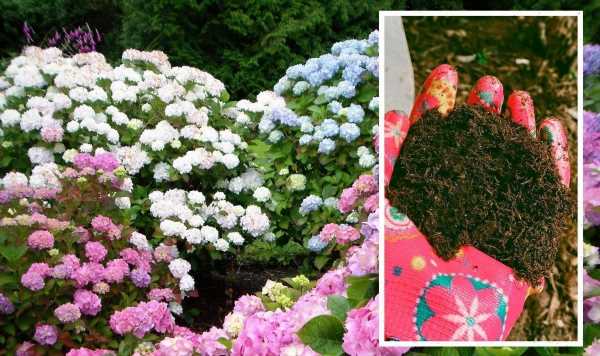Gardeners’ World: Monty Don on growing hydrangeas
We use your sign-up to provide content in ways you’ve consented to and to improve our understanding of you. This may include adverts from us and 3rd parties based on our understanding. You can unsubscribe at any time. More info
Hydrangeas are gorgeous plants which can flower for several months. They come in bright shades including white, blue, green, purple and pink. Unfortunately the heat areas of the UK are experiencing can cause many plants, including hydrangeas to suffer.
The heat can cause hydrangeas to become hard and lose their colour, especially at the edges.
To prevent this from happening, gardeners can add organic matter to the soil.
According to the Royal Horticultural Society (RHS), hydrangeas like moist soils that are not prone to waterlogging.
Soil can be hard to keep moist during the summer months, especially when temperatures reach above 25C.
The experts said: “Improving the soil and mulch with organic matter, such as garden compost or a manure-based soil conditioner, keeps the soil moist.
“Plant hydrangeas in sun or light shade in a spot sheltered from cold winds.
“Growing hydrangeas in very dry soil and full can can lead to leaf scorch and poor flowering.
“The new spring growth is prone to frost damage, so plant away from frost pockets and scorching wind.”
DON’T MISS:
Homes Under the Hammer buyer adds £147,000 value to ‘quirky’ cottage [VIDEO]
Mollie’s Motel & Diner: An escape to the Oxfordshire countryside [INSIGHT]
Six common gardening mistakes to avoid this august [EXPERT]
For those experiencing a hosepipe ban, adding mulch may help to reduce the amount of water the hydrangea may need.
If gardeners can, it may be good to provide hydrangeas with some shade throughout the hottest points of the day.
Watering is also very important and establishing a regular routine can help keep the plant alive.
Plants should be watered early in the morning or in the evening to avoid evaporation.
Watering when it is hottest can scorch the plants.
Due to hydrangeas thriving in moist soil, they may even need to be watered twice a day.
Gardeners should check the soil throughout the day to make sure they aren’t drying out too much.
Tom Hilton, director of outdoor and indoor gardening specialists, National Greenhouse, recently told Express.co.uk: “If you’ve found yourself in the enemy camp when it comes to your hydrangeas, and you’ve left them abandoned in the heatwave, there’s still hope to mend that relationship.
“If the leaves have been left to bake and burn, unfortunately, there’s no recovery for them, but the plant itself can still survive.
“Start by giving the plant’s soil a thorough soak – you may want to use a soaker hose for this.
“To check how deep the water needs to travel down, use a stick or pole to poke down into the soil.
“After this soak, it’s not a case of a job well done.
“This will begin to bring hydrangeas back to life, but if they are pretty damaged, it may take a while for you to see the plant and flowers make a full recovery.”
Gardeners in a hosepipe ban area can still use watering cans to water their gardens.
Source: Read Full Article



